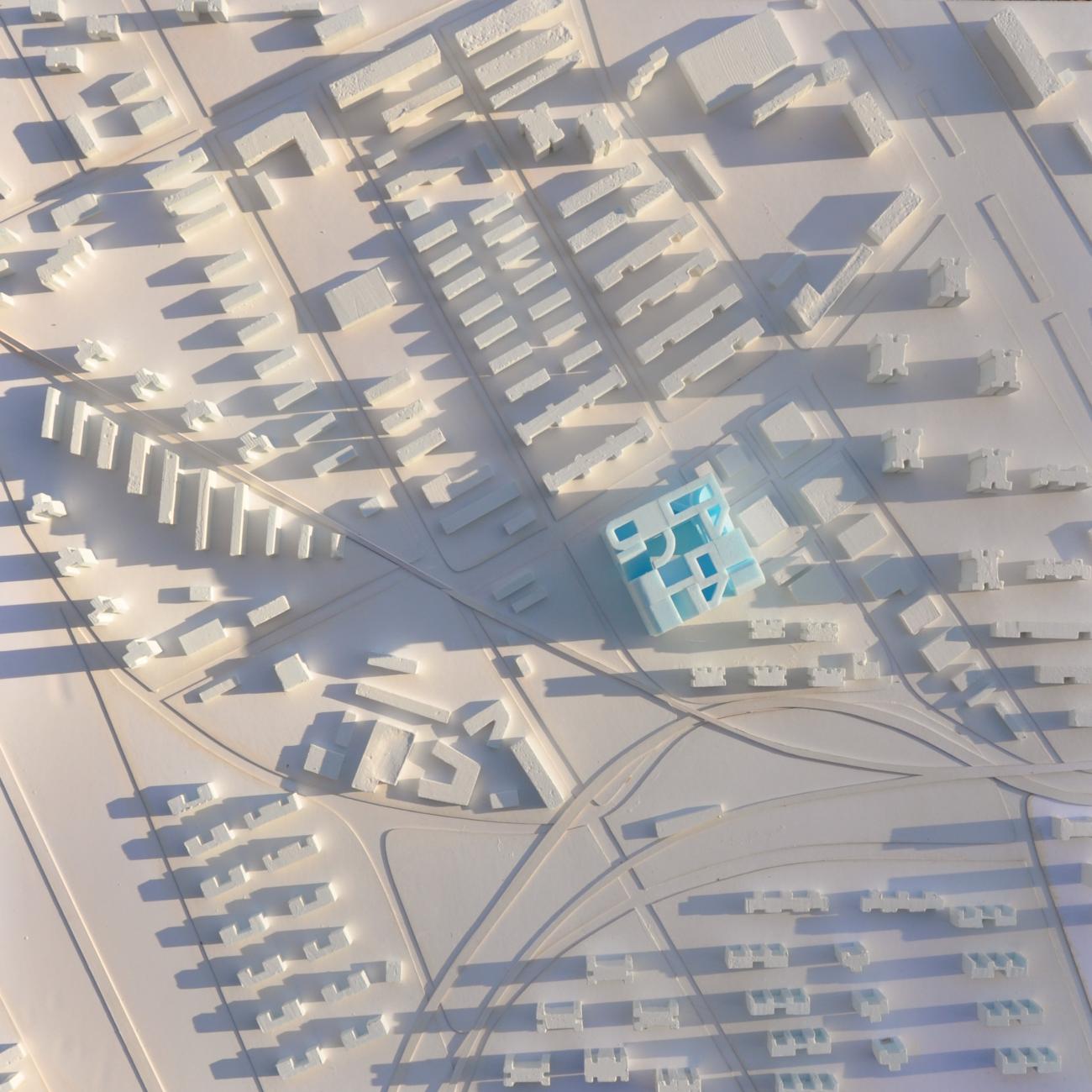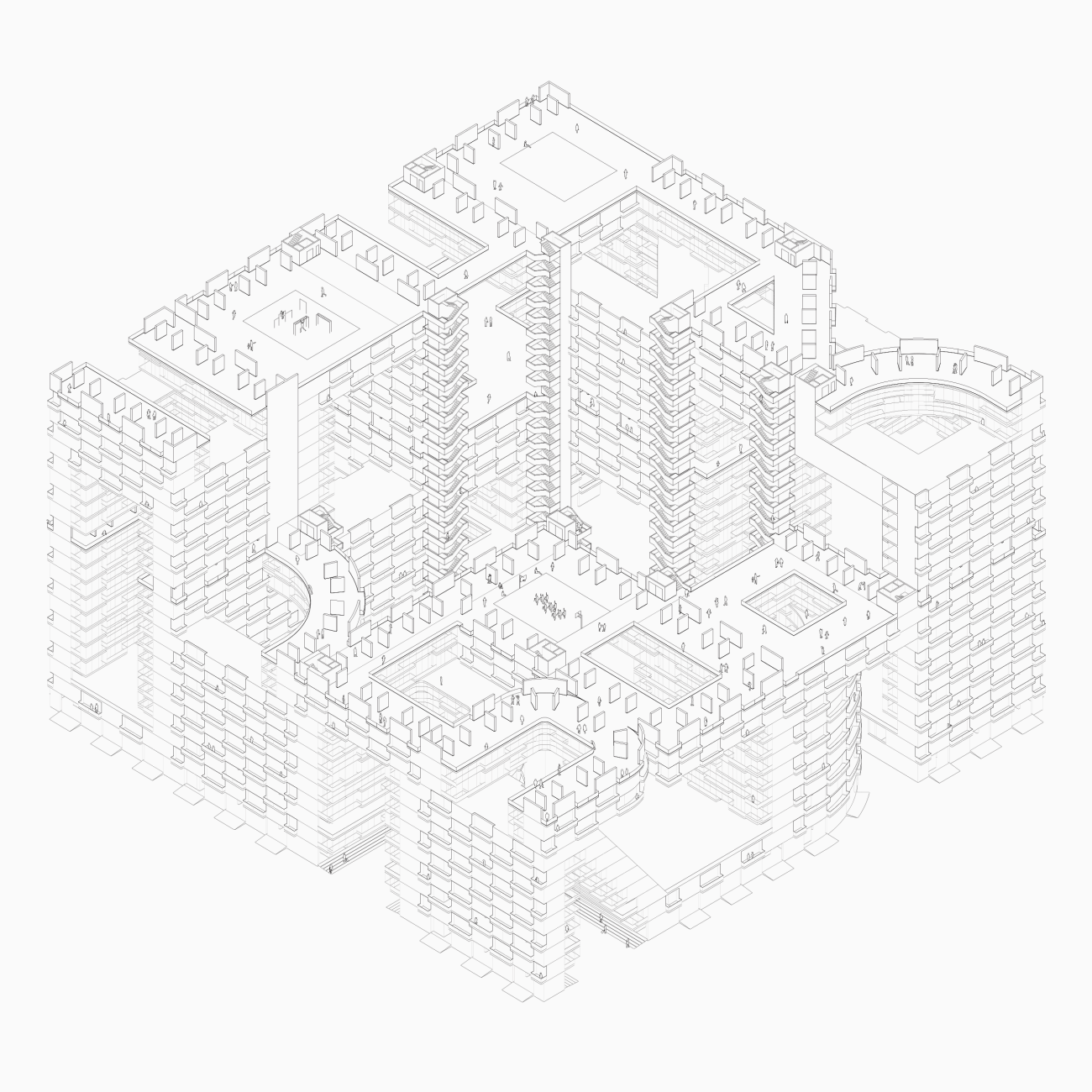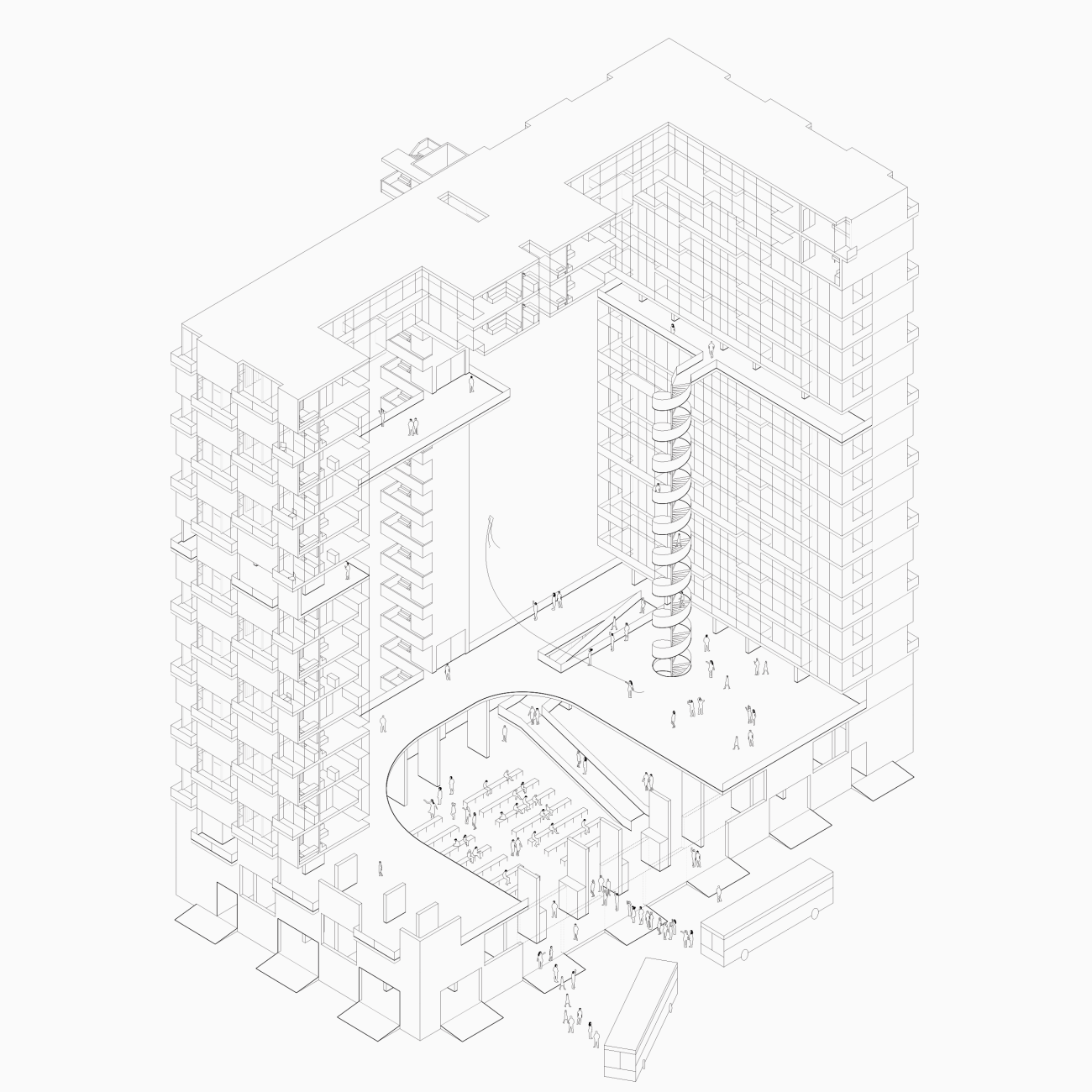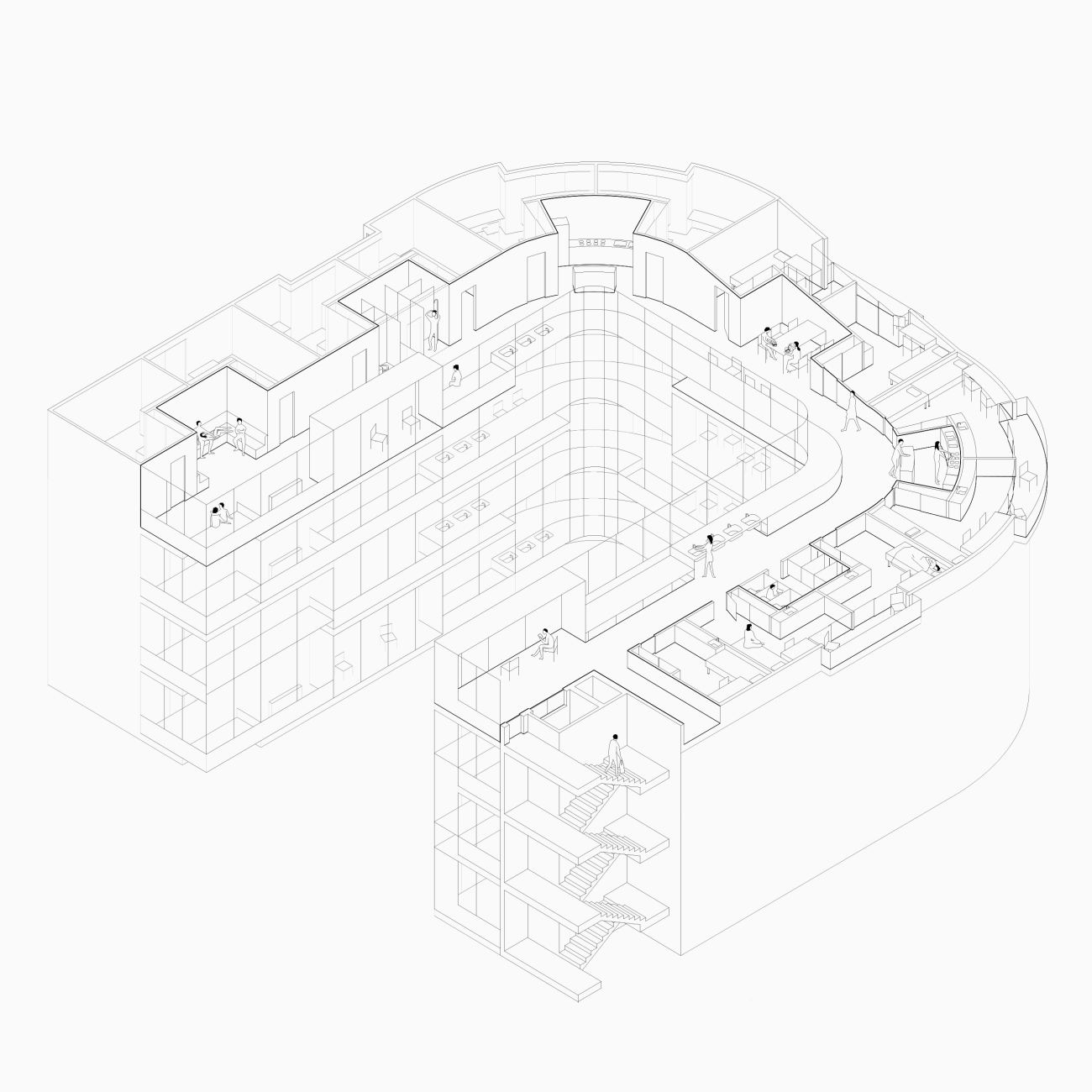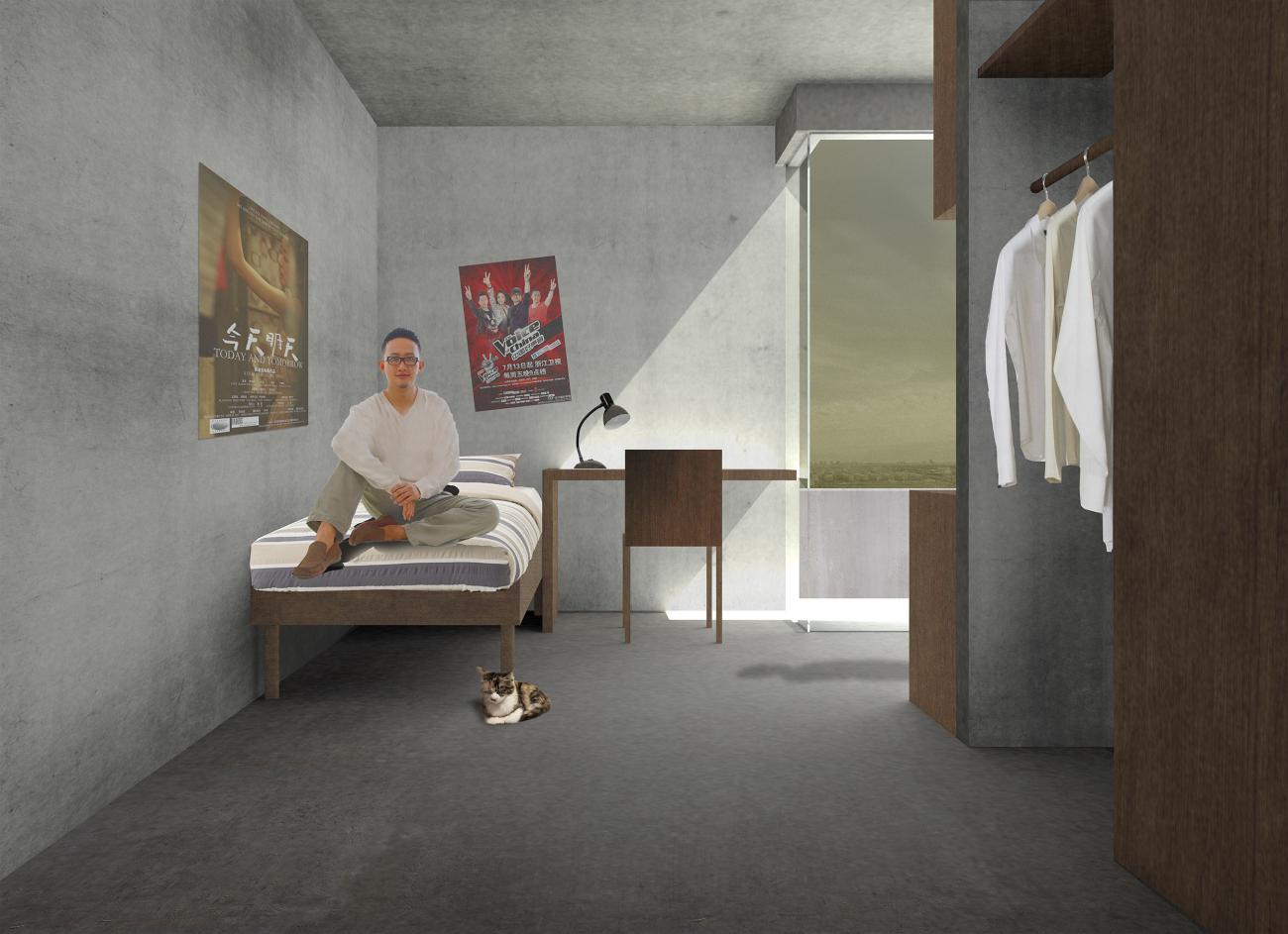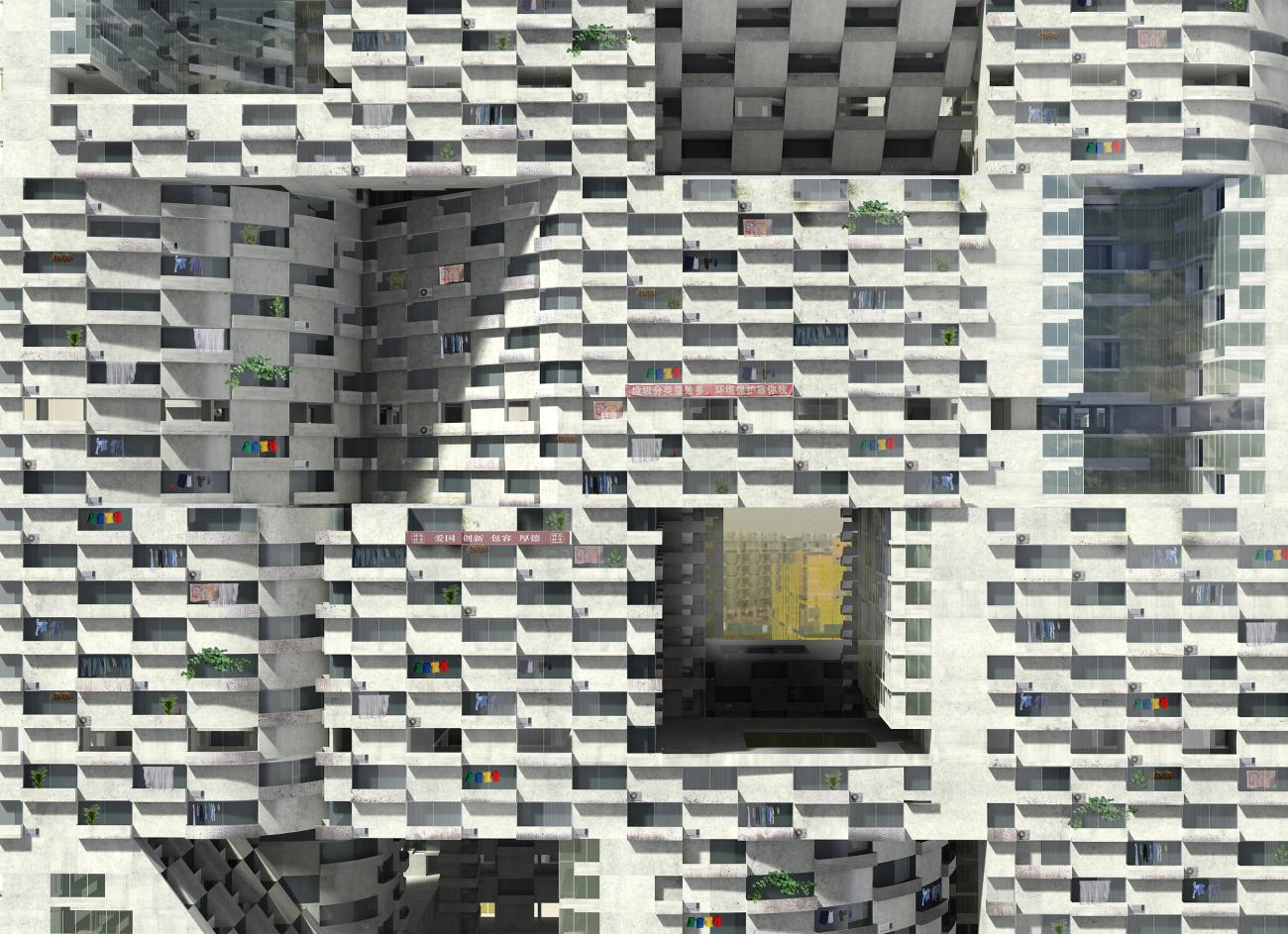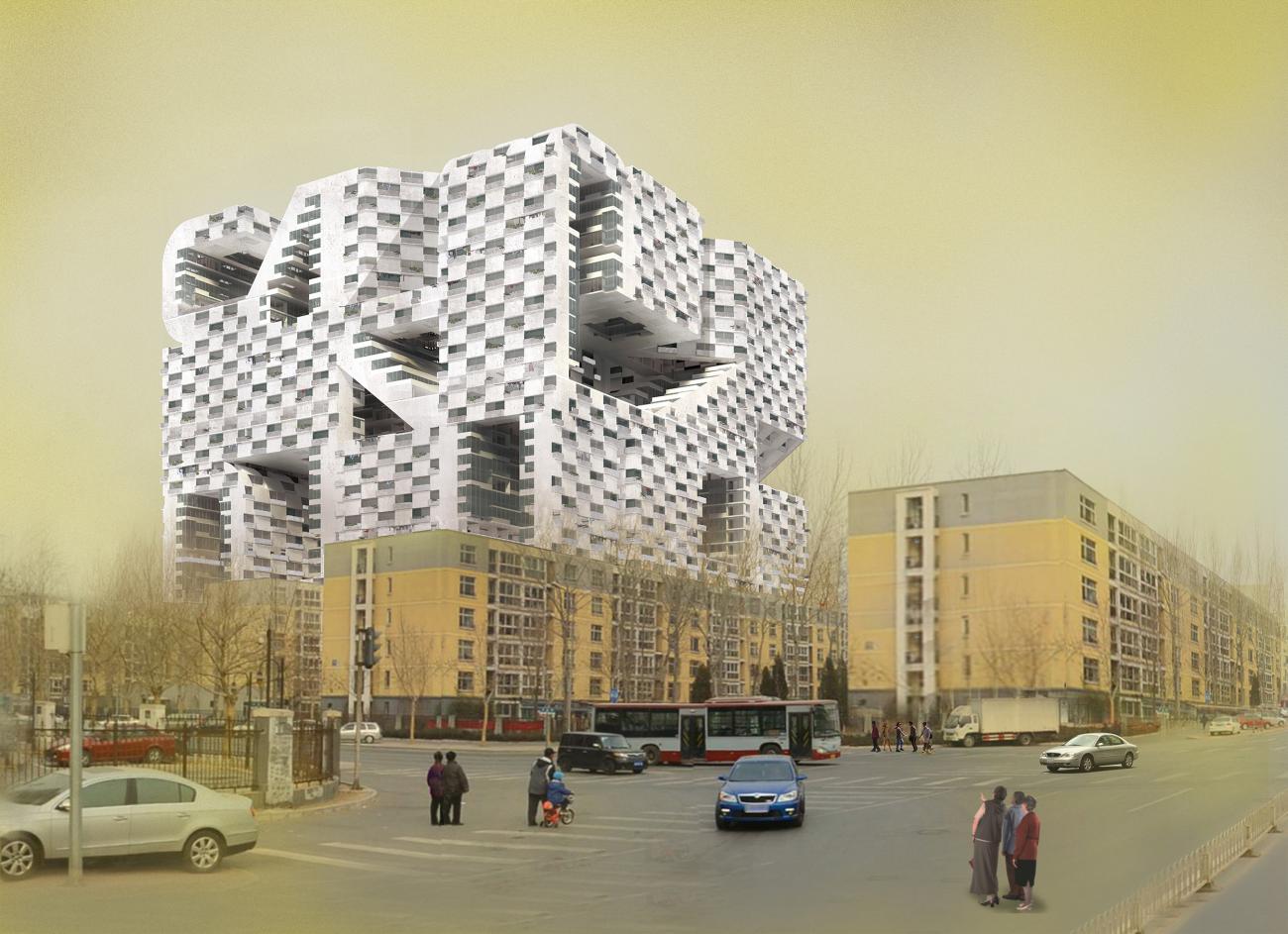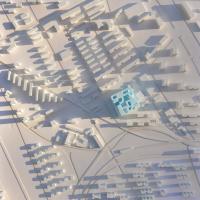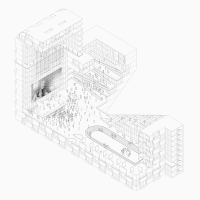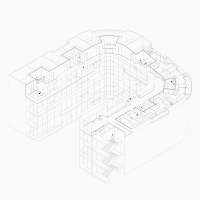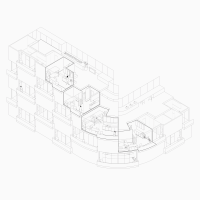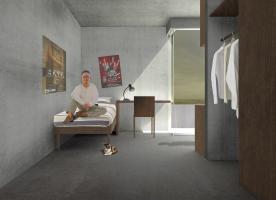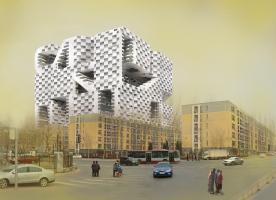De Peter Yi
2014
“Ant tribes” are a social phenomenon of young college graduates that group together in large Chinese cities, defined equally by their dreams of upward mobility and their precarious living conditions. The combination of reality and utopianism that fuel their motivations make them a viable subject for an architecture that cultivates a contemporary collective.
Throughout the twentieth century, architects have used mass housing as a testing ground for new forms of collective living, resulting in archetypical buildings such as Ginzburg’s Narkomfin and Corbusier’s Unité. While the necessity of such a project remains, the mode of operation has shifted. To defy the dense processes of privatization that govern housing today, architecture needs to operate from marginalized points of society, and create archetypes from which ideas can be distilled to the masses.
Such a position allows architecture to pursue utopian ambitions through a pragmatic cause. The Soviet Constructivists, operating in the utopian-pragmatic moment of realizing a socialist state, redefined the program (or life) embodied in housing and gave the resultant collective a representational form. Contemporary China is undergoing an equally radical social transformation, and while the dominant political structure is far too complex to reinterpret directly, there are many isolated moments of social marginalization that allow for architectural opportunism. This thesis adopts the “ant tribe” as the prompt for a new archetypal housing block that cultivates their way of life while exploring the form that organizes and represents this multivarious collective.


